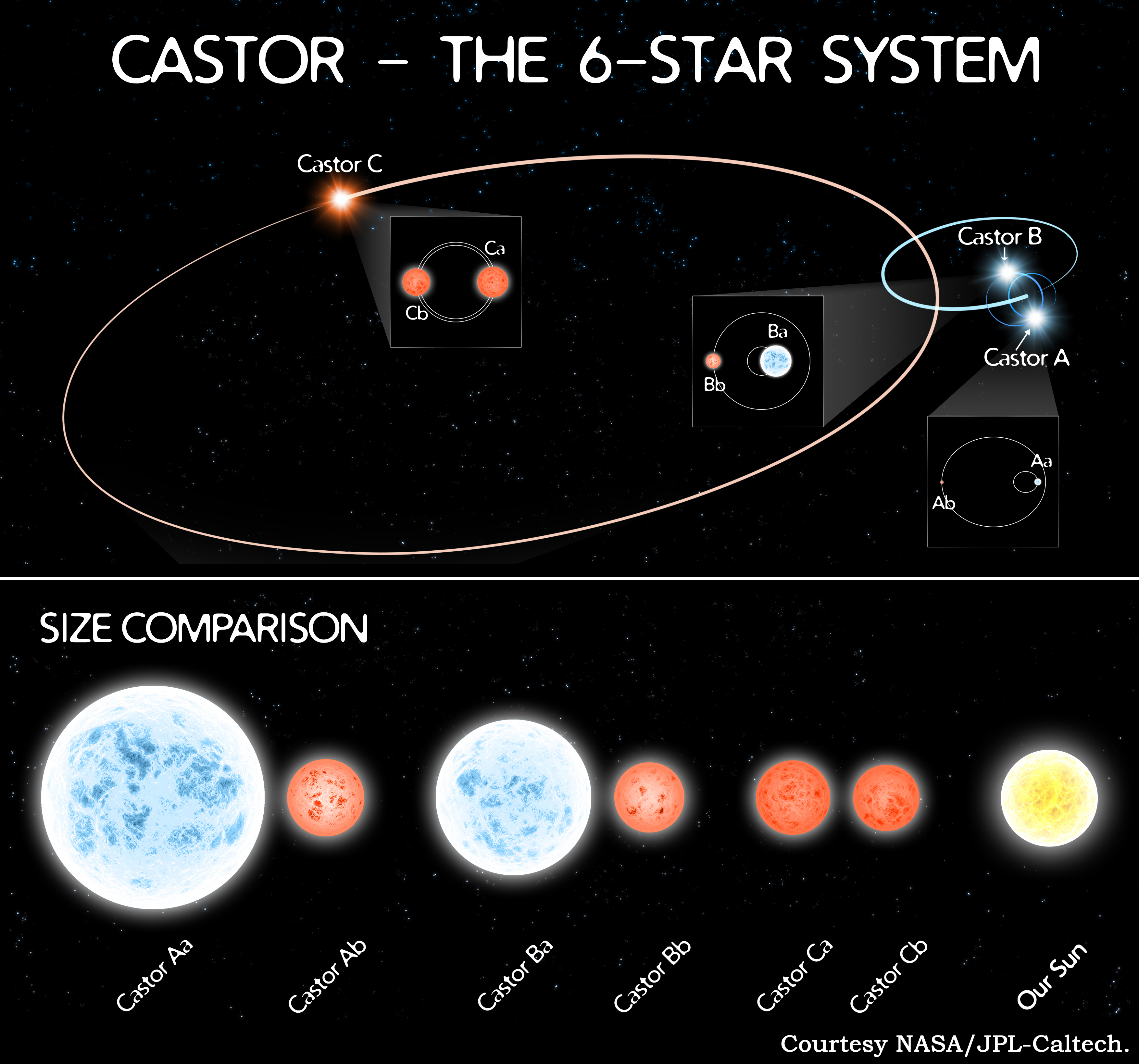'Sextuply-eclipsing sextuple star system' discovered whirling through the Milky Way
If you've ever ridden a teacup ride at a state fair you might be ready for life in the six-star system TIC 168789840.

Ever ridden a teacup ride at a state fair? If so, you might have a small taste of life in a whirling, twirling sextuply-eclipsing sextuple star system.
"Sextuply-eclipsing sextuple star system" is astronomer-speak for a system with six stars all orbiting each other and all regularly eclipsing one another from the perspective of Earth — and astronomers have just found one named TIC 168789840.
This six- star system is far enough from Earth (a bit less than 2,000 light-years away) that telescopes can't resolve its individual stars, which blur together into a single point of light. Instead, astronomers were able to spot that point of light brightening and dimming in an unusual pattern, thanks to the stars' penchant for regularly eclipsing one another.
These eclipses are visible due to a spot of luck: TIC 168789840's stars orbit on a plane that lines up perfectly with Earth, so every time one of the stars passes another, it creates an eclipse that is visible to Earth's telescopes. From a different vantage point, the stars would never block each other, and the system would just be another point of light in space.
This isn't the first sextuple system ever discovered, the astronomers noted in a paper published Jan. 12 to the arXiv database (it has not yet been peer-reviewed) But the star system joins a club with just three other members, including Castor, a famous system discovered in 1920.
Related: 12 trippy objects hidden in the zodiac
Castor, known since ancient times as one of the stars in the constellation Gemini, was identified as a binary system in 1719 by the English clergyman and astronomer James Pound. Just 51 light-years from Earth, the system revealed itself to Pound through a telescope as two points of light dancing around each other. By 1905, astronomers realized those two points were actually both pairs of stars tightly orbiting each other and circling a common center; and by 1920, another team spotted a third pair of stars circling the inner four, making it a six-star system.
Sign up for the Live Science daily newsletter now
Get the world’s most fascinating discoveries delivered straight to your inbox.

There are other ways for six-star systems to organize themselves. ADS 9731, for example, comprises four points of light circling a common center. Two of those points of light are tight binaries, making it a sextuple system.
But "TIC 168789840 is most similar to the famous Castor system," the authors wrote.
There are two inner pairs of stars each whipping around in tight circles. (The first pair completes a binary orbit every 31 hours, the second every 38 hours.) And those binaries — the "inner quadruple" — complete a circuit around a common center about once every 3.7 years.
Compared with the inner couples, the outer binary's two stars are less cozy with each other, turning a binary orbit only once every 197 hours. And the binary pair only completes its circuit of the whole system once every 2,000 years or so.
Identifying distant, dim TIC 168789840 was a higher-tech enterprise than James Pound's telescope observations of close, bright Castor. The researchers used the NASA supercomputer Discover to dig through years of data from the Transiting Exoplanet Survey Satellite (TESS), which is tuned to look for changes in the light of stars all over the sky.
The researchers trained a "neural network" — a type of artificial intelligence — running on Discover to look for patterns of dimming and brightening that could indicate complex systems. But most of what turned up were boring binaries. Careful study of TIC 168789840, however, revealed something unusual going on, and follow-up observations confirmed the presence of six stars.
Researchers still don't know precisely how complex multiple-star systems form, the authors wrote in the paper. This discovery offers critical data for untangling that problem. And more data could soon be on the way.
"TESS has allowed us to find well over 100 such candidate multi-star systems to date, with the analysis of another sextuple system … to follow this in the near future," they wrote.
Originally published on Live Science.











